|

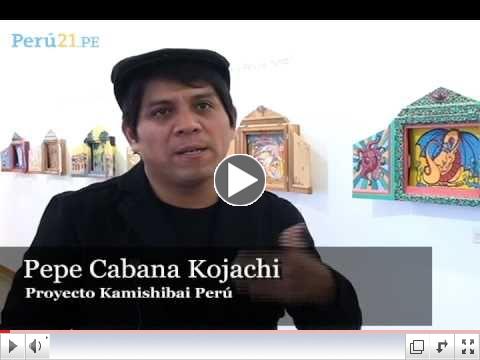 | | El teatro de papel de Pepe Cabana, Mukashi Mukashi |
Kamishibai:
A Versatile Tool to Develop
Reading, Writing
and Oral Storytelling Skills
All kamishibai include a
Teacher's Guide
ClickTeacher's Guide here
for excerpt of
The Bamboo Princess Teacher's Guide
The Kamishibai Classroom
 | | The Kamishibai Classroom: Engaging Multiple Literacies Through the art of "Paper Theater" by Tara McGowan |
Caldecott Medalist
Allen Say
Remembers
Kamishibai
The Art of Japanese Paper Theater
For more information please go to our website!
 | | Jeffrey Dym's videos How to use kamishibai and Kamishibai in the classsroom |
|
|
 | |
Manga Kamishibai
by Eric P. Nash |
Asian Zodiac Postcards
3 examples:
 | |
One of thirteen Zodiac Postcards
The Year of the Rabbit |
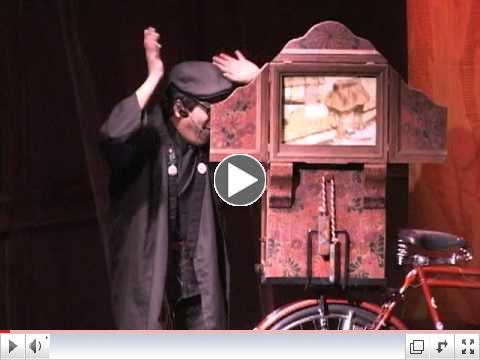 | | Kamishibai Peru - Mukashi Mukashi |
|
|
|
Featured Kamishibai:
The Bamboo Princess
(Kaguya-hime)
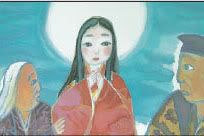
"The Bamboo Princess" is Japan's oldest folktale. The central figure of the story, Kaguya-hime, is discovered as a tiny child in a hollow stalk of bamboo by an elderly bamboo cutter and adopted by him and his wife. Soon they are miraculously blessed with great wealth. Kaguya-hime grows up to become the most beautiful woman in the land and has many suitors, including the emperor. Some of the most exciting parts of this story are those which describe the tasks five princes must undertake in order to prove worthy of marrying her. She gives each of them a nearly impossible task, such as bringing her a beautiful robe made from the skin of the White Volcano Rat from China, or the Buddha's begging bowl from India, but none of them succeed.
Although Kaguya-hime grows to dearly love her earth parents, she pines for her homeland. One night, after breaking through a line of the Emperor's soldiers trying to prevent her escape, she ascends towards the moon in a beautiful carriage sent to carry her home. She and her elderly parents realize that her true home is not on earth and sadly accept the inevitability of their separation.
The splendid setting and exotic motifs in this story set it apart from other popular Japanese folktales. Its history dates back to about the 10th century. It is a popular version of a very early story written in prose form called The Tale of the Bamboo Cutter, said to be a variant of an even older tale from the Asian mainland. The fantasy-like elements of this tale have lent themselves to adaptations in a variety of media, such as film, anime and even opera and ballet.
An interesting final note - when the Bamboo Princess returns to the moon, she leaves an elixir of immortality for her parents. Instead of choosing immortality for themselves, they leave the potion at the top of the highest mountain in Japan, Mt. Fuji, which was an active volcano when this story first appeared in Japan. According to this tale the name Fuji, which can be interpreted as "mountain that lives forever," is said to derive from their offering.
|
Moon Viewing
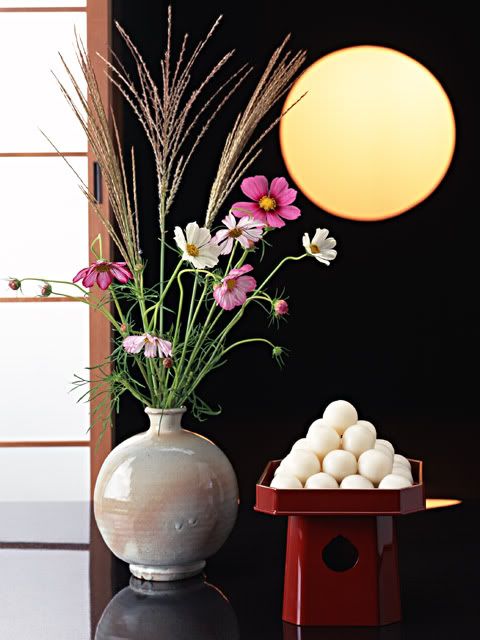
In the northern hemisphere the full moon appears larger and clearer in autumn. Just as cherry-blossom viewing was a favorite spring pastime of the ancient Japanese, they also had autumn moon-viewing parties, at which they would eat and drink, compose and recite poetry. The full moon is said to be most beautiful in mid-autumn, and even today many Japanese put offerings of seasonal crops, plants and white rice dumplings by a window in their house when the full moon appears in late September or early October.
|
About Bamboo
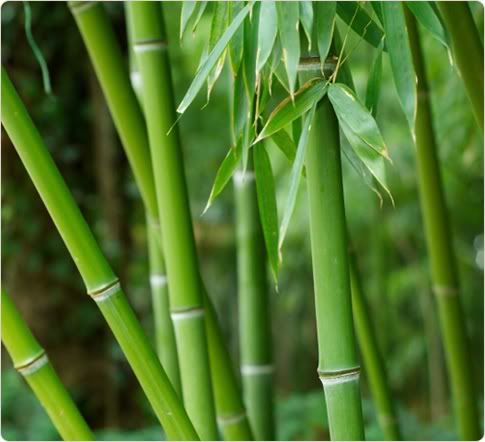
Bamboo is both a beautiful and utilitarian plant that grows wild all over Japan and much of Asia. It is actually a grass and has many unique characteristics. It grows to be very tall in a very short time. When bamboo matures it hardens, yet remains resilient. Its fresh shoots are a delicacy, and the mature plant can be used to make baskets, poles, pipes, furniture, musical instruments, tea ceremony implements, and a variety of tools for use in everyday life. It can also be used as a building material. Perhaps the Bamboo Princess's elderly father wove baskets or made implements from the bamboo that he cut.
Large groves of bamboo can be seen all over the Japanese countryside swaying gracefully when the wind blows, and when the hard, hollow culms, or stems, hit against each other as they bend in the wind, they make a very lovely, musical sound. Because of their beauty and grace, they are often planted in landscaped gardens, although their extensive root systems are very difficult to control.
Bamboo, together with the plum and pine, is used as an auspicious motif (shochikubai). The bamboo symbolizes resiliency because it bends but never breaks, while the plum - the first tree to bloom in spring - symbolizes fortitude. Pine, an evergreen, symbolizes longevity.
To the ancient Japanese bamboo was an enigmatic, mysterious plant because it grows so quickly (as fast as 3 feet in 24 hours!) and has a hollow core. As a conduit between this world and the heavens, it would be a natural place to find a tiny, magical girl, who grew up in just three months!
|
|
A Special Message to Our Readers
from Our Good Friend, Tara McGowan
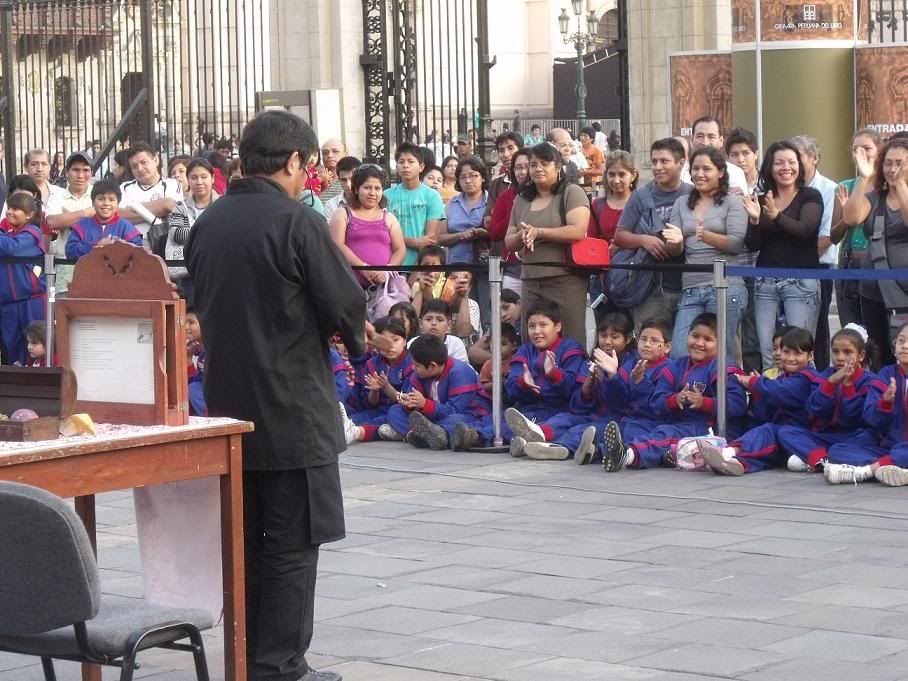 | | Pepe Cabana-Kojachi Performing Kamishibai at the Presidential Palace in Lima Peru. |
Since the publication of my book, The Kamishibai Classroom: Engaging Multiple Literacies through the Art of "Paper Theater," in 2010, I have been receiving email from around the world-Korea, India, Sweden, Canada, Turkey, and many other places-from people who are using kamishibai in their professional and recreational lives and who want to learn more about the form. This global network of interest has inspired my next book project, which will focus on kamishibai as a global literacy and how it has been (and continues to be) disseminated around the world.
As many of you know, Margaret Eisenstadt and Donna Tamaki, cofounders of Kamishibai for Kids, have been an important part of this development, as well as an invaluable resource. We have decided to collaborate on an offshoot of this larger project in the newsletter. Beginning with this newsletter, we are initiating a series of interviews, introducing readers to the many exciting ways kamishibai is being adapted and transformed around the globe, while still maintaining its unique characteristics as a multimodal performance art form that combines visual, gestural, and verbal literacies. We are very fortunate to begin our series with the remarkably beautiful and creative work of Peruvian designer and artist, Pepe Cabana Kojachi.
We are sure that everyone will be inspired by this amazing glimpse of Pepe's life and work. Also we would like to take this opportunity to invite you to be a part of our Global Kamishibai series. If you are doing new and exciting things with kamishibai and would like to contribute an interview, or if you know of someone you think we should contact for an interview (or even if you just have questions about kamishibai or the project) please email us at mcgowantara@gmail.com.
We look forward to hearing from you!
Tara McGowan, Margaret Eisenstadt, and Donna Tamaki
(Tara McGowan is a doctoral candidate in the Language and Literacy in Education division of the University of Pennsylvania's Graduate School of Education. For more information about her research interests and work with kamishibai, see her website: www.taramcgowan.com)
|
|
|
|
|